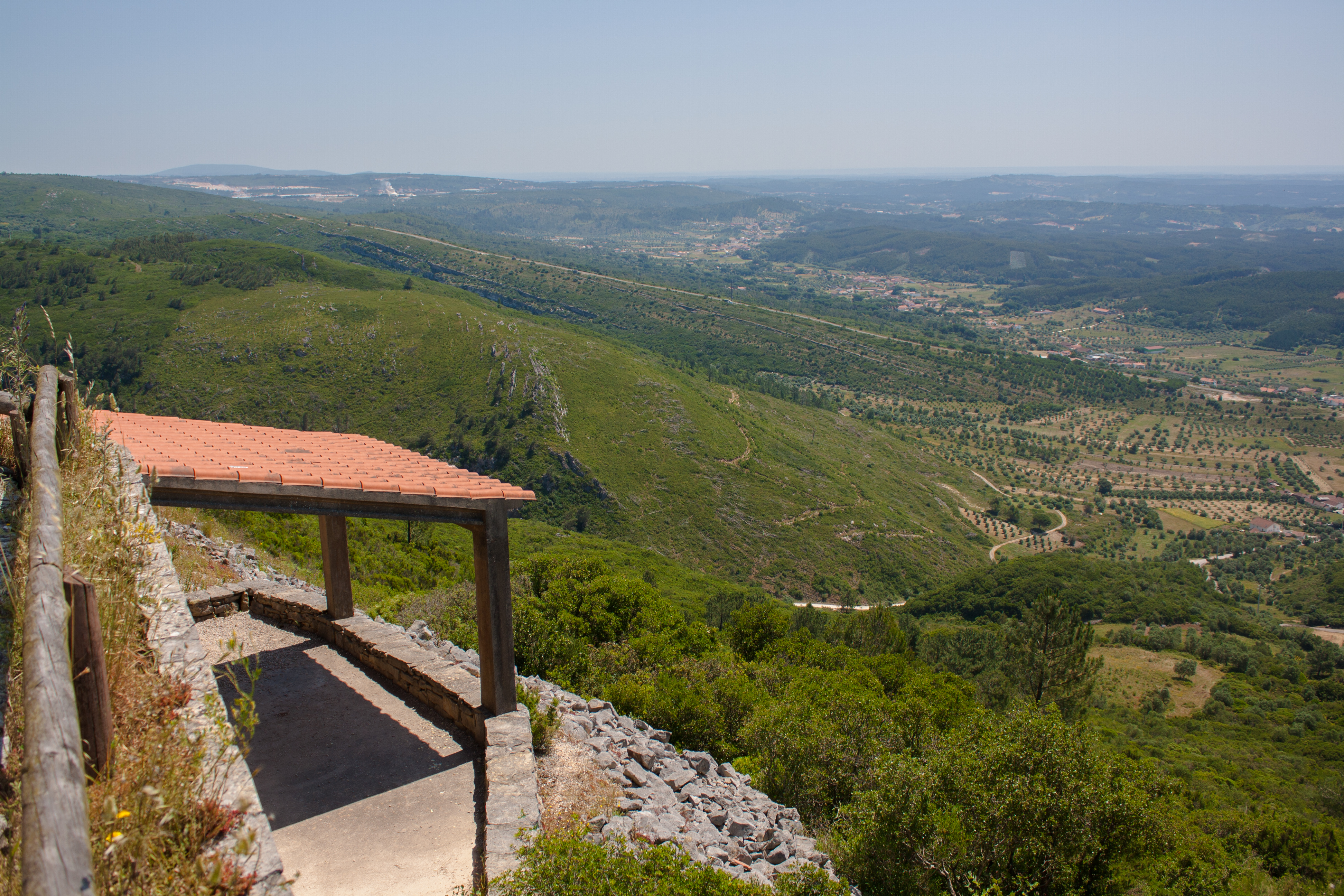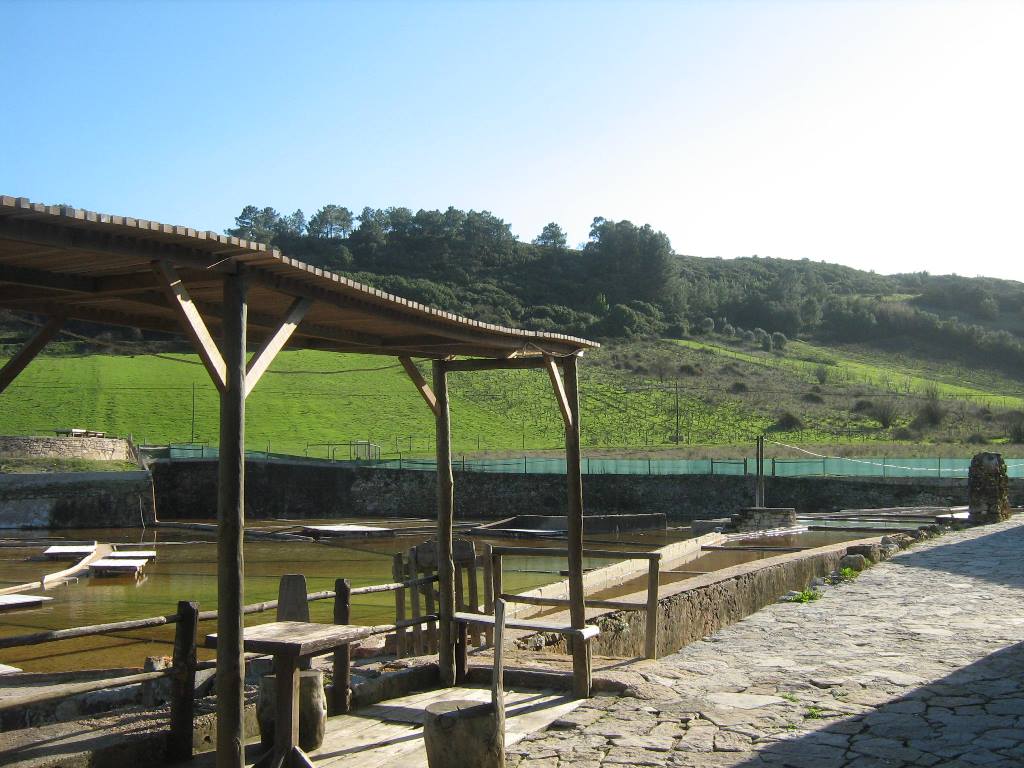The salt-pans can be found 3 km away from Rio Maior, in a valley at the bottom of Candeeiros Mountain. Surrounded by trees, vineyards and other cultivated lands, they are considered a natural wonder, once the sea is about 30 km away. The en ...
Site - Ecomuseu Salinas de Rio Maior, Rio Maior
The oldest document referring to the Salinas dates back to 1177, but it is believed that salt was already explored in Pre-historic times. Candeeiros is a limestone mountain region with many fissures in the rock, which enables the rain water to penetrate forming undercurrents. One of these undercurrents passes across a very extensive and deep rock-salt mine and feeds the well in the centre of the pans. This water is seven times saltier then the sea water. This rock-salt occupies the region of the Portuguese Estremadura, between Leiria and Torres Vedras (about 100 km). It was formed millions of years ago after the retreat of the sea that once occupied the region. In old times the water was taken, day and night, by the means of two buckets, attached to two wooden rods. That was then the most hard work of salt extraction. Nowadays the salt water is taken from the well by means of a motor-pump. The well from where the water is extracted, is common property. The right to the water depends upon the proximity to the well according to rules whose origins are lost in time. Once the water is inside the pans the evaporating process takes about three to six days, depending on the heat. This means that each pan produces salt weekly. The salt is put together with iron shovels (once wood shovels) and put to dry on a threshing floor (Eira) for sixty hours. Afterwards it is taken on a wheel-barrow or in sacks to the machine (dumper) which takes it to the cooperative wooden houses or to the wooden houses of the private workers. Not taking any chemical treatment it’s purity comes from the Sun and the wind and the work of the sailor. In a recent past most of the salt producers were farmers, who dedicated to this activity from June to September. Nowadays a team of workers is hired by the cooperative society to explore the salt-pans. They are a living museum where throughout the 8 centuries of history the methods of exploring the salt have little changed, which gives the place its peculiar character. However, the demand for an ever growing industry leads to a constant progress and innovation on the techniques used by the workers. The challenge is to adapt to a competitive economy and simultaneously save this unique heritage which must be preserved at all costs. In 1979 the Cooperative Society of the Salt Producers of Rio Maior was created to improve productivity and marketing of the salt. This purely biological salt is exported to Germany because of its high quality and the absence of any additives or chemical treatments.
REPRESENTATIVE
Points of Interest to visit at this Location
Distance: 4.5 km; Duration: 3h; Difficulty: Difficult. Location: Aldeia de Chãos Starting point: Cooperative Parking Terra Chã gps-wgs84 coordinates: 39.417998, -8.920365 The natural park of the Aire and Candeeiros mountains are the most i ...
Circular route starting and ending in the Municipal Park. Mixed floor type, 6 km predominantly on a bike path and about 3 km on a dirt track, from the Health Center to the Marinhas do Sal village. Arriving at the Salt Flats of Rio Maior, y ...
From the geological point of view, the saltworks are located in a diapiric valley. A diapir is a low density rock mass, relatively mobile, crossing other denser rocks. This vertical movement from bottom to top, is made along faults and allo ...





